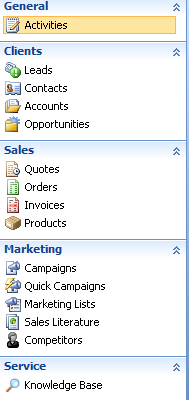Dynamics CRM 4.0 – An Introduction
Louise Alderton, 17 July 2010
Well hello out there! Welcome to my first blog post – I am Louise, a recent edition to the Magnetism team, my role is Marketing Coordinator.
Technology is certainly not my middle name, but perhaps it could be? In the past couple of weeks I have gone through the Microsoft Dynamics CRM Applications Training Course which has given me a good introduction to Dynamics CRM – let me share my first thoughts with you.
The concept of Customer Relationship Management (CRM) has existed since the exchange of goods and services came into being. But, until recently, business was more concerned with the “what’s” rather than the “who’s”.
It is now widely known that having positive relationships with customers is a vital component of business. Having a system to support and manage relationships is becoming a necessary business practice and strategy to differentiate your organisation from its competition.
I will be so bold as to say that every organisation should have a CRM strategy, but how do you know if you need a formal CRM system? Well, every organisation has customers and every one of these organisations should maintain at least some basic information about those customers. Here are some questions to ponder:
- Do I know everything about my customers right now?
- Does data end up in a ‘black hole’, unreachable when it is required most?
- Do potential opportunities fall through the cracks?
- Can I become more efficient and effective by analysing customer and prospect information?
- Will my organisation benefit from having visibility across all departments?
 Dynamics CRM is there to support an existing CRM strategy. It will assist in acquiring and retaining customers and certainly reduce time spent on administrative tasks.
Dynamics CRM is there to support an existing CRM strategy. It will assist in acquiring and retaining customers and certainly reduce time spent on administrative tasks.
The client module separates customers into four categories – accounts, contacts, leads and opportunities. This separation creates clear boundaries to develop appropriate communications and actions from. A 360 degree view of the customer can be formed so that their needs can be anticipated and responded to effectively. Overall, customer value and a relationship are built.
The other modules include Marketing, Sales and Service. Each of these modules provides the corresponding department a central place to view and manage associated activities.
My Favourite Things about Dynamics CRM:
- The familiarity of Microsoft was a personal relief.
- Being web based gives assurance that data will be backed up, is easily accessible and is up to date.
- Tasks can be created and assigned to the appropriate user and then the progress of that task monitored.
- Data capture is simple.
- Reports can be created for each area to analyse various areas within an organisation.
Follow me in the coming weeks as I learn more about Dynamics CRM. In my next few blog posts I will study and dissect my area of choice – the Marketing Module.

